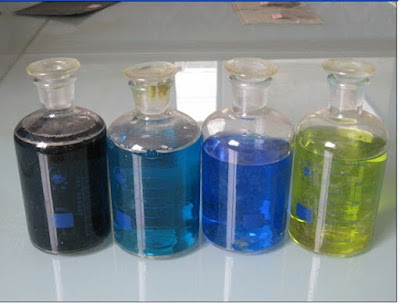Vanadium Electrolyte: The Promising Technology for Large Scale Energy Storage
 |
| Vanadium Electrolyte |
Energy storage has become one of the most important topics globally as more and more countries are adopting renewable sources of energy like solar and wind power which are intermittent in nature. This necessitates having reliable and cost-effective energy storage solutions that can store large amounts of energy and discharge it when required. One such promising technology is vanadium electrolyte which leverages vanadium redox flow batteries (VRFBs) for grid-scale energy storage.
Vanadium Redox Flow Batteries
A vanadium redox flow battery, or VRFB, uses vanadium electrolyte composed of
vanadium ions in different oxidation states to store energy. It functions in a
similar way to fuel cells but instead of consuming hydrogen or other fuels, it
uses redox reactions of vanadium ions in liquid electrolytes circulated between
a cathode and anode side. During charging, the vanadium ions in V+2 and V+3
oxidation states are converted to V+4 and V+5 states by passing a current
through the system. During discharging, the reverse reaction occurs and current
is drawn from the system.
The unique advantage of a Vanadium
Electrolytes over other battery technologies is that its energy
capacity is determined by the size of electrolyte tanks rather than by the size
of the actual power generation cell. This means the energy storage capacity of
a flow battery can be increased without a corresponding increase in power
output capacity simply by increasing the size of electrolyte tanks. The
electrolytes remain in liquid form outside the battery and are pumped into the
cell for charging and discharging.
Efficiency And Lifespan
Lab-scale VRFBs have demonstrated efficiencies between 70-80% which is higher
than many other battery technologies. The round-trip efficiency indicates the
percentage of energy that can be retrieved from charging. Moreover, initial
testing has shown the vanadium electrolyte to have a lifespan of over 15,000
cycles with little capacity fading. This makes VRFBs extremely durable for
stationary grid-scale applications that require daily charging and discharging
over many years. The electrolytes also have very low cross-contamination
between the sides which maintains high reversibility over the battery's
lifetime.
Large-Scale Demonstration Projects
Given the promising laboratory results, several utility companies and research
organizations have initiated pilot and demonstration projects to test the
real-world performance of VRFBs on a multi-megawatt scale.
One of the largest demonstration projects is the 8 MW/32 MWh stack installed by
UniEnergy Technologies and Rongke Power in Dalian, China. It can power over 3,000
homes for 4 hours and is integrated with the local grid to provide frequency
regulation and back-up power during intermittent renewable generation.
Preliminary performance after over a year shows round-trip efficiencies
exceeding 75% and minimal capacity loss.
Another notable 2 MW installation is the project jointly undertaken by Invinity
Energy Systems and National Grid in Swansea, UK. The battery is charged using
solar and wind power from Welsh farms and discharges energy to the local grid
during peak demand hours. After two years of operations, the battery maintained
around 80% capacity and delivered more than 8,000 cycles showcasing the long
lifetime of VRFB technology.
Ongoing efforts by Sumitomo Electric, Rongke Power, and other companies are progressing
multiple other demo projects across regions aiming for 40-100 MW sizes. Their
successful operation providing distribution grid support, microgrid power, and
other ancillary grid services will help validate VRFB technology at the
threshold of commercial viability.
Cost Reductions
Like other emerging technologies, higher production volumes coupled with
manufacturing innovations are expected to drastically reduce the levelized cost
of vanadium electrolytes and VRFB systems over the next 5-10 years.
Some key areas researchers and manufacturers are focusing on to lower costs
include:
- Increasing production capacity of vanadium electrolyte: Larger plants
producing 10s of thousands of liters annually vs. lab scale batches currently
can cut electrolyte costs significantly through economies of scale.
- Membrane and electrode refinements: Improving ion transfer rates through
advanced membranes and electrocatalysts can enhance power density 2-3X using
the same tank size, reducing capital costs.
- Bipolar plate innovations: Use of low-cost conductive composite materials
versus graphite could half the costs of this critical component. Pressing
technology can cut processing times.
- Standardized modular design: Adopting integrated modular VRFB stacks and
balance-of-plant components in pre-engineered containers or modules will
streamline manufacturing, installation, and maintenance.
- Supply chain development: As demand grows, more competitive raw material
sourcing from vanadium producers and ancillary component makers will exert
downward pressure on pricing.
Get More Insights on Vanadium Electrolyte



Comments
Post a Comment